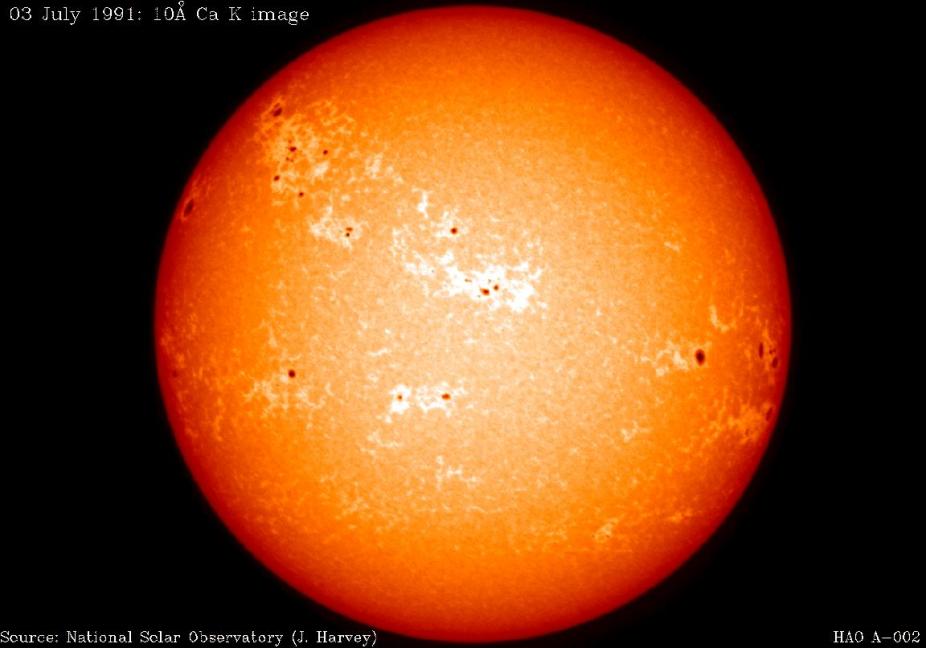The Solar Disk in Broadband Ca K
This solar image is taken through a 10 wide filter centered on the K line of Calcium (λ = 3933). Because this spectral line is magnetically sensitive, use of a filter centered on it yields better contrast between magnetically active regions and the rest of the solar surface (more on magnetic fields further below).

July 30, 1991: 10Å Ca K image.
Because the filter is wide enough to let through some of the continuum on either sides of the Ca K line, features of the solar disk seen in white light remain visible. As a consequence, sunspots can still be seen, but now plages appear much more clearly as bright areas, often surrounding large sunspot groups. Sunspots appear darker because they are cooler than their surroundings; the temperature in the center of a moderately large sunspot can be as low as ~4000 K, as compared to 5800 K for the solar photosphere. Sunspots are still quite hot and bright in absolute terms; an average sunspot, cut out of the solar surface and left standing in the night sky, would be about as bright as the full moon. Closer examination of sunspots on this calcium image—as well as on the white light image of slide #1 —reveals that most sunspots are made of a central, dark and roughly circular region called umbra, which is surrounded by a lighter (but still darker than the photosphere) ring called penumbra. Early solar astronomers were quick to note that sunspots are confined to low latitudes on either solar hemispheres, and are rarely seen above 40 or below 5 degrees latitude of the solar equatorial plane.
Written By P. Charbonneau and O.R. White–April 18, 1995